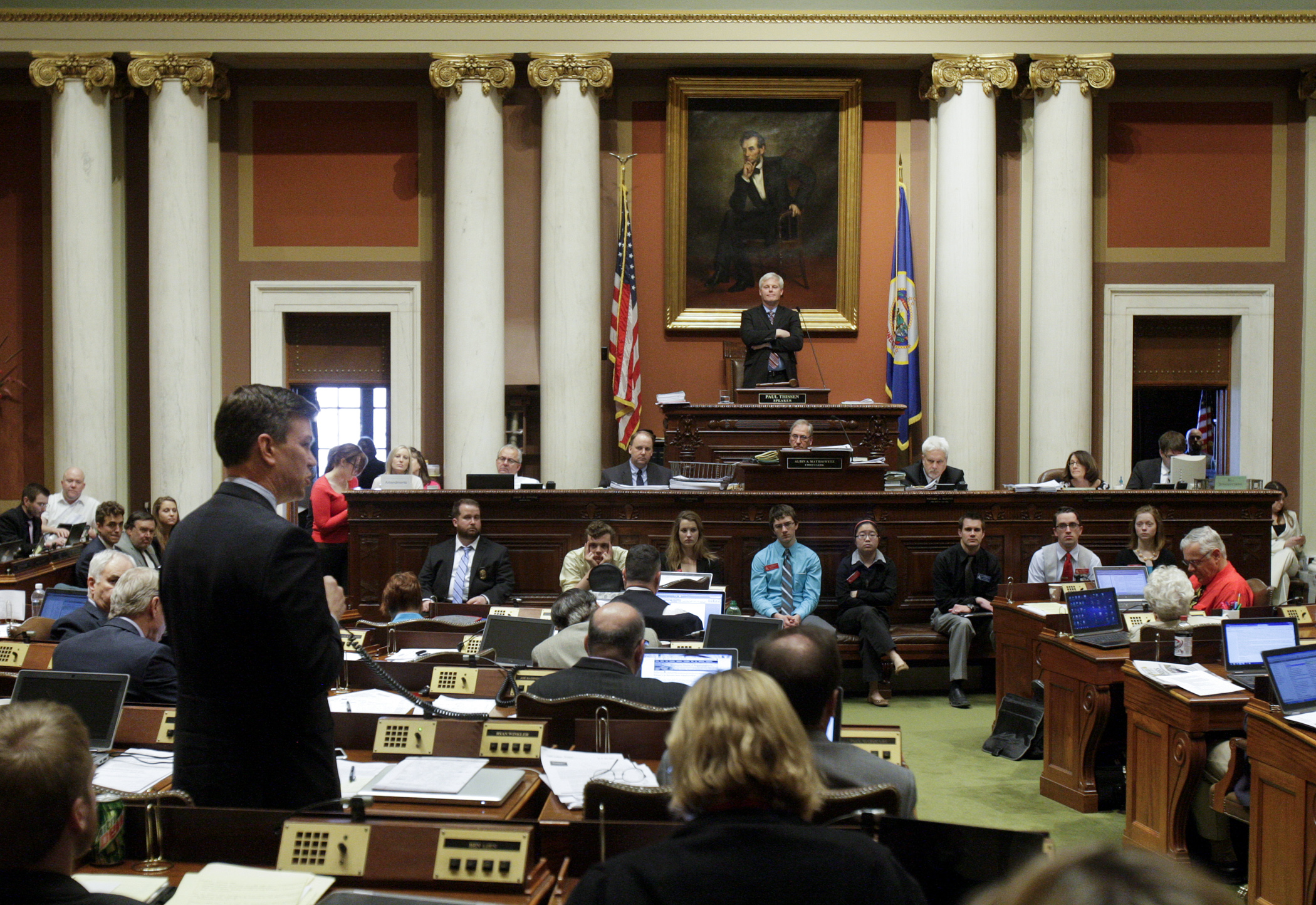Minimum wage increase passes House, governor to sign Monday

[Watch a full video archive of Thursday's floor session here.]
After nearly three hours of debate — and several accusations that the minimum wage package was done as a “back room deal” between House and Senate leadership in exchange for a new legislative office building — the House voted 71-60 to increase the state’s minimum hourly wage to $9.50, phasing it in by 2016, and indexing for inflation starting in 2018.
The Senate passed the measure 35-31 on Wednesday. Gov. Mark Dayton announced he will sign the bill into law Monday afternoon.
The state’s current minimum wage is $6.15 per hour, but most businesses use the federal $7.25 rate.
“Raising the minimum wage will increase the spending power of hundreds of thousands of Minnesotans and inject hundreds of millions of dollars into our state's economy,” said Rep. Ryan Winkler (DFL-Golden Valley), who sponsors HF2091 with Sen. Jeff Hayden (DFL-Mpls). “It will improve our economy and make our economy better reflect our values.”
The new agreement, negotiated over the past year and announced earlier this week, was amended by the Senate onto a bill that regulated state employee use of donated vacation leave. Once the House received the bill back from the Senate, House members were only able to vote to concur on the changes to the bill before voting for its re-passage.
“This is disgraceful,” said Rep. Pat Garofalo (R-Farmington). “Sometimes compromises are needed in this body. What you are seeing today is a bargain among thieves; this for a Senate building.”
Supporters said the deal was not contingent on a plan to build a new $77 million legislative office building that would be used to house the Senate.
“When I think about what we’re doing today, I know that when this becomes law this will mean relief and hope,” said House Majority Leader Erin Murphy (DFL-St. Paul). “I believe that hard work should pay off. If we don’t raise the minimum wage, people won’t get ahead.”
Murphy offered statistics about the income gap between high- and low-wage workers. In just three hours, the length of the debate on the bill, the average CEO earned what a minimum wage worker would make in a year, she said. “We’re here to do the work of the people. We came here to fight for the middle class, and build it from the middle out.”
Details of the bill include:
- $8 minimum hourly wage for businesses with gross sales of at least $500,000 in August 2014, $9 in August 2015 and $9.50 one year later;
- $6.50 minimum hourly wage for businesses under $500,000 in gross sales in 2014, $7.25 in August 2015 and $7.75 one year later;
- the $7.75 minimum wage rate would also apply for large businesses in the following circumstances: 90-day training wage for 18 and 19 year olds, all 16 and 17 year olds and employees working under a J1 visa;
- beginning in 2018, all wages would increase each year on Jan. 1 by inflation measured by the implicit price deflator capped at 2.5 percent; and
- the indexed increase could be suspended for one year by the commissioner of the Department of Labor and Industry if leading economic indicators indicate the possibility of a substantial downturn in the economy. The suspension could only be implemented after a public hearing and public comment period. In better economic times, the suspended inflationary increase or a lesser amount could be added back into the minimum wage rate in a subsequent year.
Related Articles
Search Session Daily
Advanced Search OptionsPriority Dailies
Ways and Means Committee OKs proposed $512 million supplemental budget on party-line vote
By Mike Cook Meeting more needs or fiscal irresponsibility is one way to sum up the differences among the two parties on a supplemental spending package a year after a $72 billion state budg...
Meeting more needs or fiscal irresponsibility is one way to sum up the differences among the two parties on a supplemental spending package a year after a $72 billion state budg...
Minnesota’s projected budget surplus balloons to $3.7 billion, but fiscal pressure still looms
By Rob Hubbard Just as Minnesota has experienced a warmer winter than usual, so has the state’s budget outlook warmed over the past few months.
On Thursday, Minnesota Management and Budget...
Just as Minnesota has experienced a warmer winter than usual, so has the state’s budget outlook warmed over the past few months.
On Thursday, Minnesota Management and Budget...